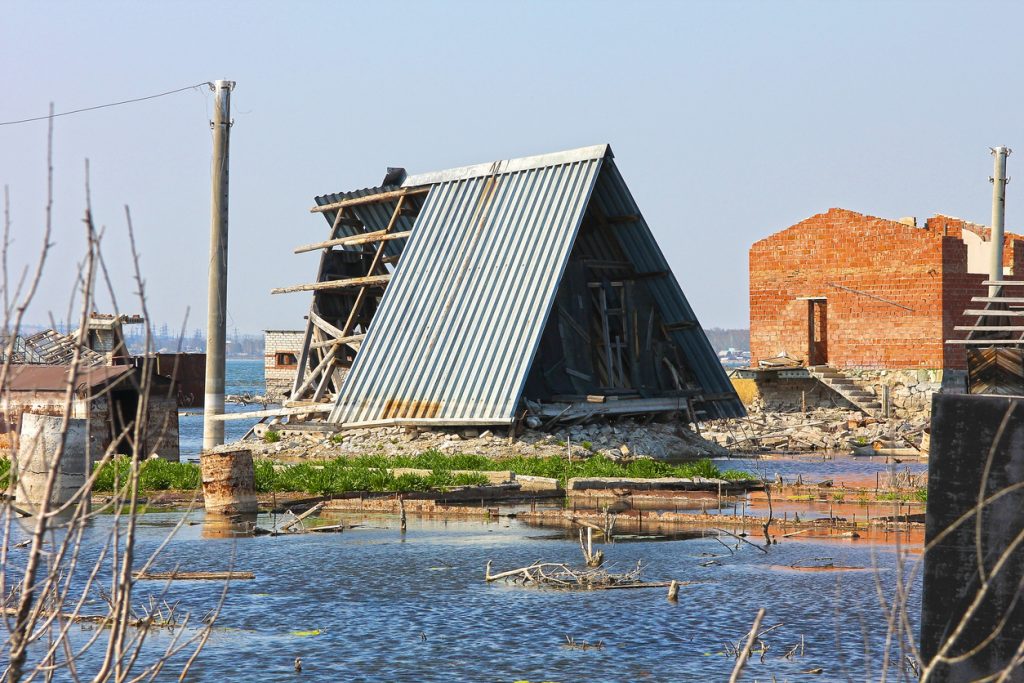Wind versus Flood—Why Do We Have Separate Insurance Policies For Wind Damage and Flood Damage?

The Wall Street Journal ran a story, In Hurricane Ian’s Wake Insurers and Homeowners Gear Up For Coverage Fights, about the wind versus flood dilemma. This is a major issue that will cause headaches to Hurricane Ian policyholders with the most significant damage, property insurance adjusters trying to designate which peril caused which damage, and restoration contractors dealing with multiple carriers for one construction project. The journalist interviewed me while doing his research and published this in the story:
Chip Merlin, president of Merlin Law Group in Tampa, Fla., which represents policyholders in conflicts with insurers, said his office already is receiving calls from people who feel their home insurers aren’t treating them fairly. Some say they sought to file a claim but were directed to file with their flood insurer. Mr. Merlin’s stance is that a claim should be filed with both home and flood insurers, to better ensure that damage from both wind and flood is identified and the homeowner can tap into both policies’ proceeds.
‘These things often end up in court unfortunately,’ Mr. Merlin said. ‘We’re doomed to go through it again.
I have received numerous calls and messages about the article with one common question:
“Why do we have to have two policies covering wind and flood when one policy can cover both and do away with the problem?”
There are historical and actuarial reasons why we have the current system. A 2017 study, Flood Risk and Insurance, by the National Association of Insurance Commissioners commented on the history of the National Flood Insurance Program (NFIP) that issues most of the flood insurance policies:
The NFIP was created in 1968 largely in response to the failure of the private sector flood insurance market. Following the severe Mississippi floods of 1927, private insurers concluded the flood peril was uninsurable due to adverse selection, risk-based premiums would be too high for families to afford, and flood losses could be so catastrophic as to cause insolvencies or have a significant impact on surplus. This lack of coverage by the private sector triggered significant federal disaster relief to victims of Hurricane Betsy in 1965 and led to the creation of the NFIP in 1968.
When communities voluntarily join the NFIP and adopt minimum floodplain management regulations, their residents become eligible to purchase a flood insurance policy through the program. When it was created, the NFIP discounted premiums to maintain property values on structures already built in flood prone areas, while new construction was charged premiums reflecting risk. Even though premiums on existing property were highly discounted, relatively few homeowners purchased coverage during the first five years of the program, leading Congress to pass the federal Flood Protection Act of 1973. This Act requires all properties located in a mapped 100-year floodplain, designated as a Special Flood Hazard Area (SFHA), to purchase flood insurance if they have a mortgage or loan from a federally backed or regulated lender. The 1973 Act also requires communities to participate in the NFIP in order to be eligible for federal disaster assistance. The federal Housing and Community Development Act of 1974 added a notification requirement to the mandatory purchase requirement: Federally regulated lenders must inform a borrower if their property is located in an SFHA.
The bottom line is that mass marketing of flood insurance coverage could potentially bankrupt insurers. The price to sell the policies profitably is so high for those in high flood risk areas that policyholders will not purchase the product. The federal government came up with a solution, but with building code requirements to help reduce the impact of flood to properties most susceptible to flooding.
The study noted that the flood peril is not the only risk that has led government-backed programs so that insurance can be sold:
Insurers’ withdrawal from certain markets due to the high cost of covering catastrophic risks, including a lack of sufficient reinsurance capacity and other risk transfer instruments, such catastrophe (CAT) bonds, led to the establishment of government-backed programs such as the California Earthquake Authority (CEA), the NFIP, and the federal Terrorism Risk Insurance Act (TRIA).
While there are many suggestions for possible change where one policy covers the wind and flood peril at the same time, only the United Kingdom has a plan in place with its federal government to make that a reality. Maybe we will have a new program that solves this problem before the next Hurricane storm surge disaster.
For policyholders who suffered damage, and if there is any question about which carrier to report the loss to, my strong suggestion is to report the loss to both the wind and flood carrier, as noted in Do I Make A Wind Damage Or Flood Damage Claim? Public Adjusters Are Trained To Adjust Both Claims At The Same Time. Second, keep track of everybody who is doing anything regarding the adjustment and restoration, as I noted in Multiple Catastrophe Adjusters—What Policyholders, Contractors, and Public Adjusters Should Do.
Thought For The Day
Life is not easy for any of us. But what of that? We must have perseverance and above all confidence in ourselves. We must believe that we are gifted for something and that this thing must be attained.
—Marie Curie



